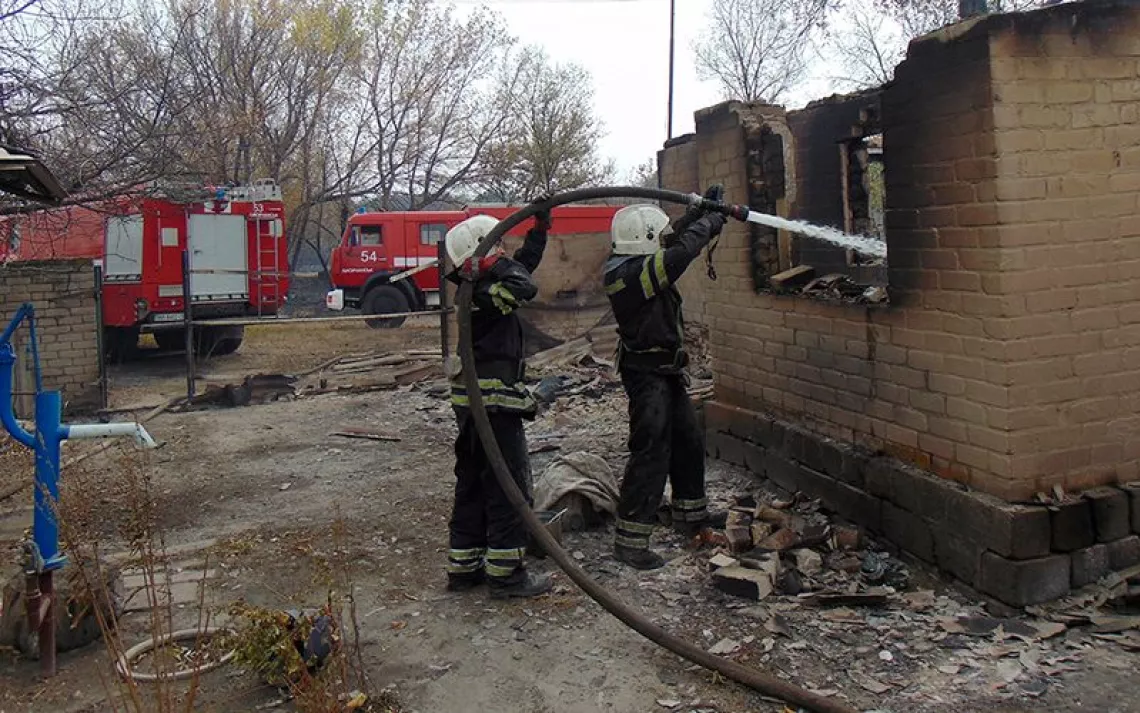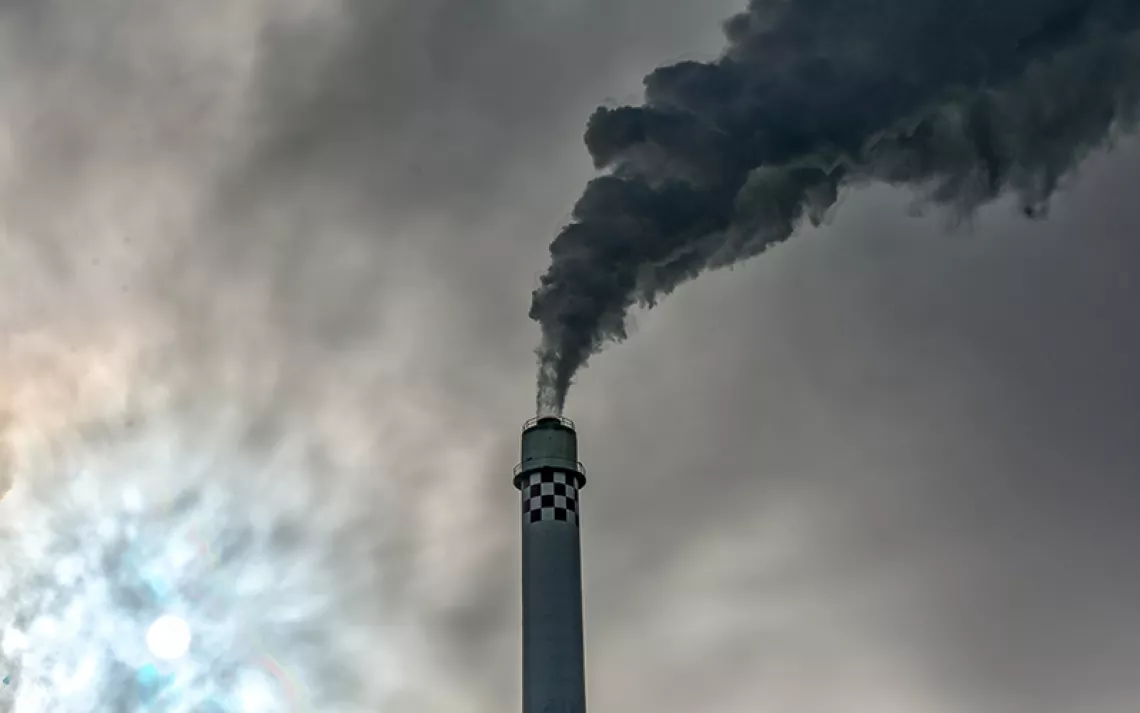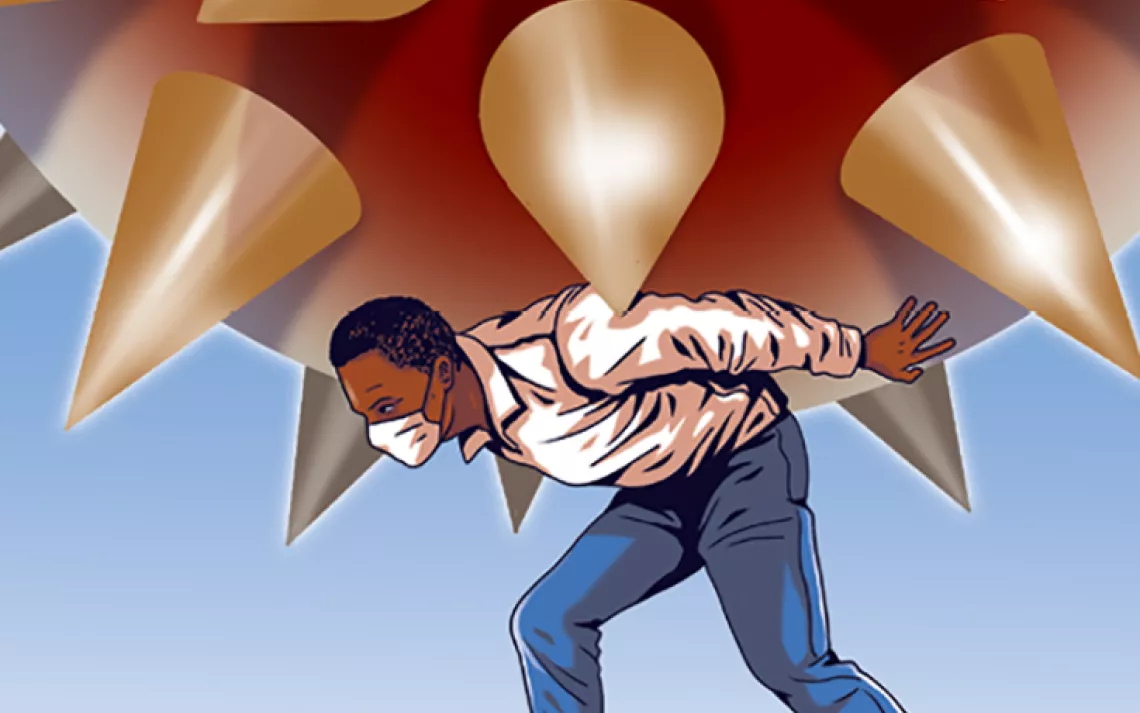Why Does the National Park Service Have a SWAT Force?
The US Park Police played a disgraceful role in Trump’s Lafayette Square photo op

Police clear the area around Lafayette Park on June 1, 2020. | Photo by AP Photo/Alex Brandon
The opinions expressed here are solely those of the writer and do not necessarily reflect the official position of the Sierra Club.
The horrific scene of police violence that played out two weeks ago in Washington, DC—as President Trump’s security team cleared peaceful protesters for a hackneyed photo op in front of a historic church—will be etched into our national memory for decades to come. On June 1, thousands of demonstrators gathered in Lafayette Square, a public park near the White House, to protest the killing of George Floyd by a Minneapolis policeman. Without warning, officers—many bearing shields emblazoned with the words “US Park Police”—set upon the crowd. Nonviolent protesters and journalists covering the scene were gassed with chemical irritants, beaten with batons, and shot with “nonlethal” rounds.
Shortly after, Donald Trump emerged from a chain-link-cocooned White House, crossed Pennsylvania Avenue, and lumbered between a column of officers dressed in full body armor toward a boarded-up St. John’s Episcopal Church. Then, with an expression that hovered between a pout and a smirk, Trump grabbed a bible produced from his daughter’s designer handbag and raised it aloft.
While most criticism focused on the viciousness of the police response and the political crassness of the president’s photo op, more fundamental questions were left unanswered: Who exactly were these officers who had acted as Trump’s personal goon squad? Why were they here? Should such a force exist in the first place?
You might be surprised to learn that some of the security forces belong to the federal agency best known for smiling rangers in wool sweaters and wide-brimmed hats: the National Park Service. The US Park Police is a special branch of the National Park Service tasked with protecting federal landmarks in and around the capital. The USPP, which also provides security at federal sites in New York City and San Francisco, traces its roots to the 1820s, when a single officer, known simply as a “watchman,” was assigned to guard the Executive Mansion (an edifice known today as the White House). Over the years, the Park Service’s policing capabilities have grown vastly. Today, the NPS’s law enforcement wing—like municipal police departments across the nation—has come to resemble a quasi-military force more than a traditional police department. Even though congressional budget reductions have forced the NPS to cut 20 percent of its law enforcement staff since 2005, it still has more than 1,750 sworn members in its ranks, according to a USA Today investigation, making it slightly larger than the Denver Police Department.
The strength of that force has been on full display the past couple of weeks as officers erected chain-link barriers around the White House and pushed protesters out of public parks and away from the Lincoln Memorial and Washington Monument, civic landmarks long associated with the public protest, especially the civil rights movement.
The violent actions of the US Park Police during this period of citizen protest are very likely unconstitutional. The strong-arm tactics also run counter to the national park system’s mission to “preserv[e] unimpaired the natural and cultural resources and values of the national park system for the enjoyment, education, and inspiration of this and future generations.”
Ironically, the National Park Service’s modern police force can be traced to another infamous episode of police misconduct, according to researcher Alice B. Kelly Pennaz, author of a journal article titled “Is That Gun for the Bears?” The Yosemite Riots of 1970 were touched off when a group of around 500 young holiday revelers arrived in Yosemite’s Stoneman Meadow over the Fourth of July weekend. The gathering quickly turned into a countercultural “happening” replete with alcohol, drugs, and nudity. Park staff, worried about disturbance to other guests in the already crowded valley as well as ecological damage to the meadow, confronted the youths and ended up clashing with them. As tensions mounted, the youths declared the meadow an “occupied zone.” “[H]ired assassin rangers are trying to rob us of our last sanctuaries,” one reveler told The New York Times. Another called for a “10,000‐freak army” to recapture Yosemite Valley.
In an attempt to disperse the growing crowd, the NPS ordered a curfew, which the self-described occupiers disregarded. Park rangers then responded with force. One witness described the riot’s first moments this way: “Park rangers, wranglers, maintenance workers, and even naturalists wearing construction helmets and armed with ax handles emerged from the far tree line into the meadow.” Other rangers charged in on horseback, using batons and chemical mace in an attempt to clear the crowd. The crowd fought back, setting a bonfire in the road and overturning a police car. After several hours, park staff were finally able to quell the unrest that they had touched off. With the help of police officers called in from surrounding towns, the rangers made more than 130 arrests. An investigation later revealed that the patchwork Yosemite security team had committed a host of policing errors. In addition to improperly inventorying confiscated property and performing illegal searches, the rangers were also accused by eyewitnesses of using excessive force to subdue the “hippies.”
According to Pennaz, the Yosemite Riots were a watershed. “The [riots] crystalized what had come to be increasingly polarized views of law enforcement and the figure of the ranger within the NPS,” Pennaz writes. “On one hand were those who thought that the NPS needed to professionalize their law enforcement program, to enhance training, and to make the roles of rangers as law enforcement officers clearer and more explicit. On the other hand were those who were anti law enforcement or who wanted law enforcement to remain invisible in the parks.”

Sign up to receive Sierra News & Views
Get articles like this one sent directly to your inbox weekly.
With this action you affirm you want to receive Sierra Club communications and may vote on policy designated by the Sierra Club Board.
Those calling for “invisible” law enforcement in the parks were quickly and soundly overruled. In 1971, Congress threw its weight behind law enforcement, appropriating more than a half-million dollars for personnel development and training. Over the past 50 years, the National Park Service has received billions of taxpayer dollars to beef up its policing capabilities. In 1975, the NPS established its Special Forces police unit, which includes motorcycle, canine, and aviation units as well as a fully outfitted SWAT force. According to a NPS web page, the SWAT force is “proficient with a variety of weapons including the submachine gun, assault rifle, sniper rifle, and less lethal weaponry.” In the “war on terror” years following 9/11, a decadent array of military gear flowed into the NPS, including flash bang grenades and M-16 rifles. Today, even in scarcely visited national parks in the western United States, it’s not unusual to see law enforcement rangers driving large pickup trucks or SUVs outfitted with a sophisticated array of military hardware.
Even as the Trump administration has proposed slashing the Park Service budget (the White House’s proposed 2021 budget cuts 14 percent from Interior Department funding), the agency has sought to funnel money to its “special forces” programs, particularly to those devoted to providing security for high-ranking members of the executive branch. In its 2021 budget, the NPS requested nearly $1.4 million for a dedicated security detail to protect the secretary of the interior. Its rationale: “[T]he Secretary is a potential target for acts of terrorism, acts of violence, foreign intelligence threats, and harassment.” The additional officers, according to the budget request, would not only provide protection but proactively sniff out “potential inappropriate communications, threats, organized protests or civil disobedience directed toward the Secretary of the Interior.”
Which brings us back to the abuse of protesters in Lafayette Square two weeks ago. It’s clear that the park police were mobilized not to protect historic sites or guarantee the right of citizens to protest peacefully, but to appease an erratic and incoherent president who, just hours earlier, had reportedly retreated to a bunker in the basement of the White House. This was not merely a waste of federal resources and a besmirching of one of the United States’ few truly beloved federal agencies—it was also a terrible misuse of a police force created to protect America’s “best idea.”
In response, Democrat lawmakers, led by House Natural Resources chair Raúl Grijalva, have called for an investigation and demanded the identity of the government officials who gave the order for the police to advance along with a list of other law enforcement entities involved in the violence. In the Senate, Angus King, an independent from Maine who caucuses with Democrats and who is the ranking member of Senate Energy and Natural Resources Subcommittee on National Parks, has written to Interior Secretary David Bernhardt to express his concerns about the June 1 incident. “During these demonstrations, the US Park Police, among other federal law enforcement officers, appeared to use excessive force, chemical agents, and projectiles to indiscriminately remove protesters from President's Park, a park whose founding purpose is described as providing ‘a large open area associated with the White House for freedom of public expression and assembly activities,’” King wrote.
I suggest Grijalva and King add to their list of concerns and demands an ultimatum: If the US Park Police can’t be trusted to uphold the democratic values of the National Park Service—if it has been reduced to a shock force that can be marshaled by corrupt politicians to attack political opponents exercising their First Amendment rights on public lands—then it should be disbanded.
 The Magazine of The Sierra Club
The Magazine of The Sierra Club



